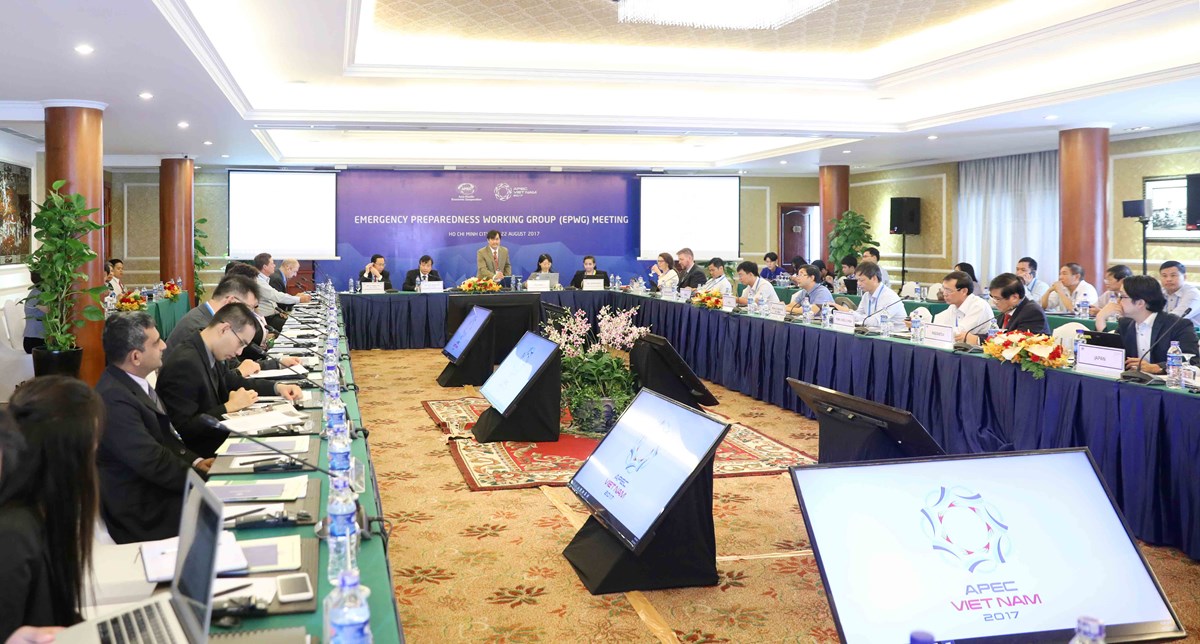APEC Builds Natural Disaster-Resilient Food Supplies
Back to list
Against the backdrop of the devastating flooding caused by Hurricane Harvey along the Gulf of Mexico, APEC member economies are taking steps to build their agricultural safeguards against the escalating threat of natural disasters due to climate change.
Agriculture and disaster management officials from the region, which experiences 70 per cent of the world’s natural disasters and is also the largest producer and consumer of food globally, began implementing new resilience measures during policy meetings in Ho Chi Minh City and Can Tho in Viet Nam’s Mekong Delta.
The measures aim to secure food production and supply chains that employ tens of millions of people and feed 3 billion people across the Asia-Pacific. They include help for small-scale producers and agricultural communities highly vulnerable to the increasing frequency and intensity of natural hazards linked to climate change—from hurricanes and typhoons to drought.
“Adverse impacts induced by natural disasters are additional challenges to food security that require cross-cutting expertise to offer feasible solutions,” explained Tran Quang Hoai, Director General of Viet Nam’s Directorate of Natural Disaster Prevention and Control. He pointed to public-private coordination in APEC to boost technological resilience within the sector.
Officials are working to help agricultural producers in high-risk areas to withstand an emergency by enabling the introduction of disaster-proof crops and farming methods—with guidance from industry and civil society groups.
They are also deploying community-based preparedness training, based on analysis of need levels in the region, to expedite operational recovery after a disaster.
“APEC is extending grassroots support to those whose livelihoods depend on the agricultural sector and are exposed to disaster shocks at an economic and social level,” noted Kyoko Kondo, Co-Chair of the APEC Emergency Preparedness Working Group, which is overseeing the initiative. “Aging populations add to recovery challenges in rural areas including farms.”
“We are disseminating planning tools and expertise to help local agricultural producers in the region mitigate disaster risk,” added Dr Li Wei-Sen, Executive Director of the APEC Emergency Preparedness Capacity Building Center. “A farmer that knows what the dangers are and prepares for them appropriately stands a much better chance of weathering a catastrophe.”
Lessons from disaster-stricken agricultural areas are shaping APEC’s efforts to equip people within the sector for all contingencies. This includes attention to land and crop management, sanitation and broader health considerations.
“What farmers grow, how they grow it and when is only part of the disaster resilience equation,” concluded Stuart Brown of the World Vegetable Center, which is partnering with APEC on implementation. “Without proper awareness of health and nutrition concerns, and support systems, threats to agricultural areas, workers and the people that rely on them become magnified. APEC is securing food supply chains where they are most vulnerable and vital.”
Senior Disaster Management Officials from APEC economies will meet in Vinh, Viet Nam on 21-22 September to take this work forward and initiate parallel measures for enhancing emergency preparedness in the region.